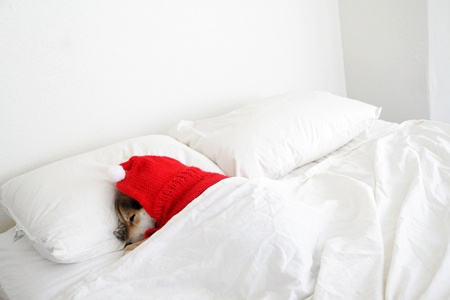Is Silk Really a Warm-Cool Winter-Summer Bedding?
Silk is often marketed as a warm-cool winter-summer bedding material, but is this really the case? In this article, we explore the truth about silk as a bedding option, examining its properties and how it compares to other commonly used bedding materials.Firstly, let’s talk about silk’s physical properties. Silk is a lightweight and soft material that can provide a comfortable sleeping surface. However, it is also prone to creasing and can be difficult to maintain its original shape and texture. This means that while silk may initially feel comfortable, it may not be the most sustainable or long-lasting choice for bedding.Another consideration is silk’s temperature-regulating properties. Silk is often marketed as a material that can keep you warm in winter and cool in summer. However, this is not entirely accurate. While silk can provide some insulation in winter, it is not as effective as some other materials like down or fleece. Similarly, in summer, silk may provide some cooling properties, but it is not as effective as materials like cotton or bamboo.So, is silk really a warm-cool winter-summer bedding? The answer is somewhat complicated. Silk can provide a comfortable sleeping surface and has some temperature-regulating properties, but it is not as effective as some other materials in either winter or summer. Additionally, silk is prone to creasing and may not be the most sustainable or long-lasting choice for bedding. Therefore, if you are looking for a truly warm-cool winter-summer bedding material, silk may not be the best choice.
When it comes to bedding, silk is often touted as the ultimate winter-summer solution, offering warmth in the cold and coolness in the heat. But does it really live up to this reputation? Let’s take a closer look at how silk performs in different weather conditions.
Firstly, let’s talk about its reputation as a “warm” winter bedding. The thermal properties of silk are indeed exceptional. Silk fibers are hollow, allowing for more air to be trapped inside, providing extra insulation from the cold. Moreover, the surface of the silk fibers is smooth and tightly packed, reducing the amount of air that can pass through, further preventing heat loss.

However, just because silk is good at retaining heat doesn’t necessarily mean it’s the best choice for colder weather. After all, the human body doesn’t just give off heat evenly all the time. When we sleep, our bodies undergo temperature fluctuations. To adapt to these fluctuations, many people like to use multiple layers of bedding, such as a top sheet, a middle layer, and a bottom sheet. In this case, silk might not be the most practical choice, as it can be difficult to find matching layers of silk bedding that will fit together properly.
Now, let’s move on to silk’s reputation as a “cool” summer bedding. The properties that make silk good at retaining heat also contribute to its cooling effect. The tightly packed surface of the silk fibers prevents too much heat from being absorbed, and the hollow fibers provide a barrier against heat transfer. This means that silk can help keep you cooler in the summer.

However, just like in colder weather, silk also has its limitations when it comes to summer use. One major drawback is that it can easily become saturated with sweat if you’re a hot sleeper. When this happens, the silk won’t be able to absorb any more sweat, and it can become uncomfortable or even sticky. Additionally, if you live in a particularly humid environment, silk may not be the best choice for summer bedding because it can absorb too much moisture from the air.
So, is silk really a warm-cool winter-summer bedding? The answer is complicated. On one hand, silk does have some excellent thermal properties that make it suitable for both colder and warmer weather. However, there are also some drawbacks to using silk for sleeping that you should take into account before making a decision. Ultimately, the best way to decide whether or not silk is right for you is to experiment with different types of bedding and find what works best for your body and your environment.

Articles related to the knowledge points of this article:
Title: The Significance of a Tie in Different Aspects of Life
Mastering the Art of Efficient Tie Tying: A Comprehensive Guide in 60 Seconds
The Story of Boseiden Mens Jacket
Title: Recycling Down Jackets: A Step-by-Step Guide
Title: Mastering the Art of Scarf Tying: A Comprehensive Guide to Different Techniques and Styles



